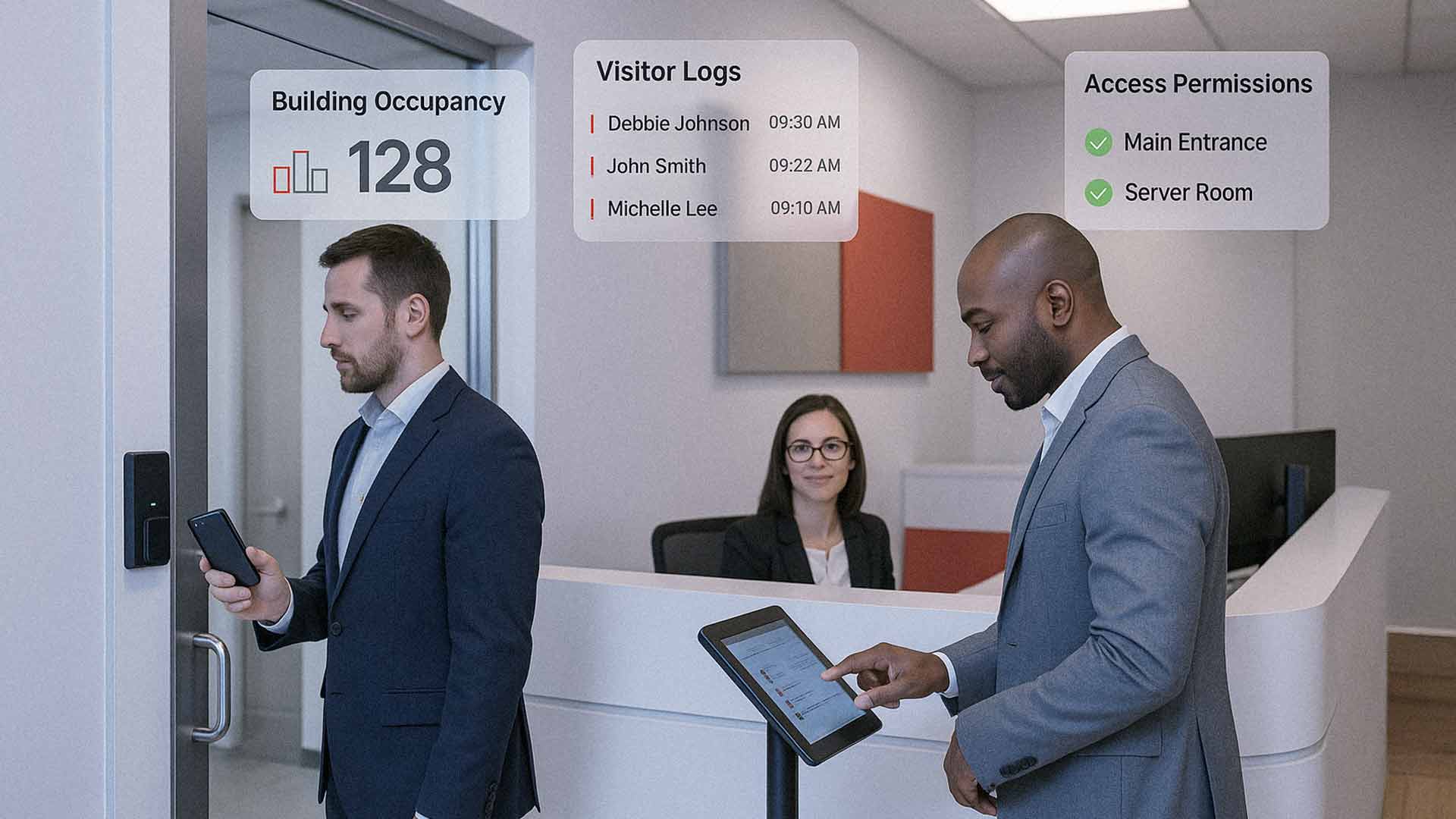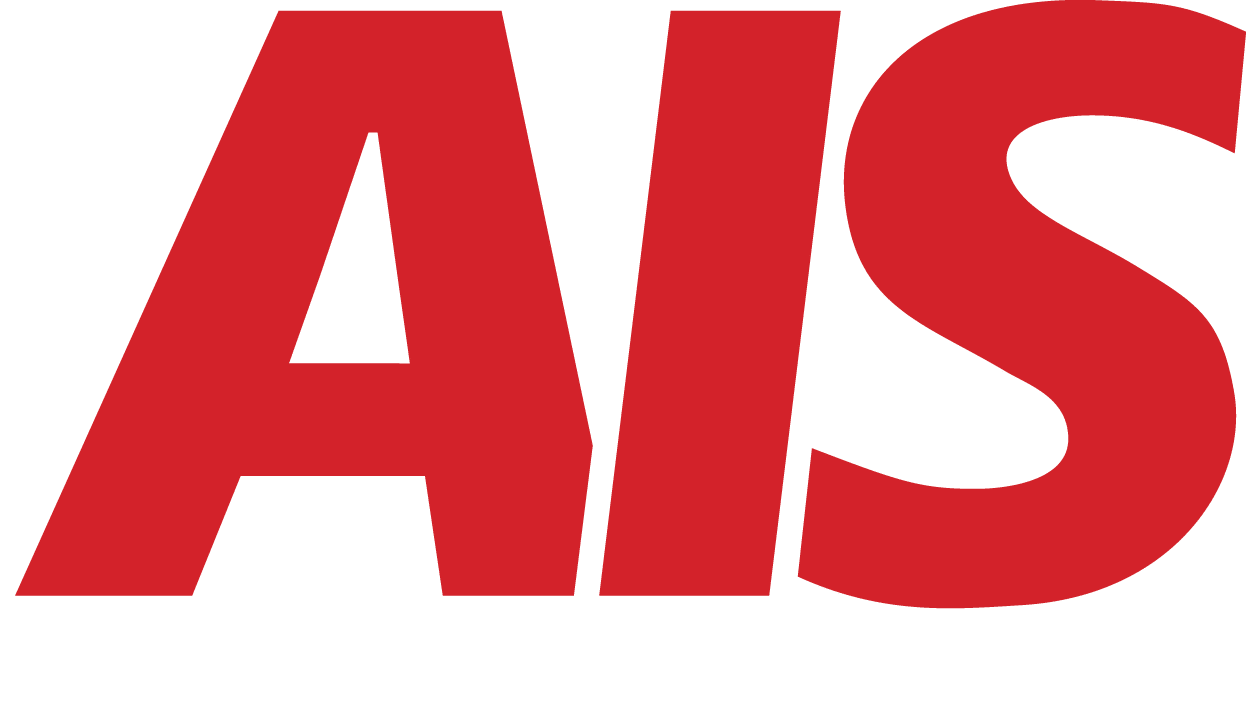How to Merge Access Control and Visitor Management Systems
September 30th, 2025 | 6 min. read

Picture this: a visitor walks into your office building, signs a paper logbook at the front desk, and waits for someone to escort them through a secure door. Meanwhile, employees use a keycard or badge to move freely between departments.
Two separate systems, two separate processes, and a lot of room for confusion.
In many businesses, access control and visitor management are treated like completely different tools. One is designed for employees, and the other is usually a patchwork system for guests. The problem is that this separation creates security gaps, inefficiencies, and compliance challenges.
If your business wants better visibility into who enters your facility, tighter control over access, and a smoother visitor experience, it might be time to merge your access control and visitor management systems.
Let’s break down what that really means, why it matters, and how to do it effectively.
What’s the Difference Between Access Control and Visitor Management?
Understanding the distinction is key to seeing why integration works.
Access control is a security system that controls who can enter your facility, which areas they can access, and when. It usually applies to:
- Full-time employees
- Contractors
- Regular vendors
Authentication methods include keycards, mobile credentials, biometrics, or PIN codes. The goal is to manage internal access.
Visitor management is about tracking and controlling short-term or one-time visitors. This includes:
- Clients
- Interview candidates
- Delivery drivers
- Temporary workers
It involves collecting names, contact info, time of entry and exit, host names, and issuing temporary badges or passes.
Both systems are important, but when they operate in isolation, it’s hard to answer a simple question: Who is in the building right now, and do they belong there?
Why Merging These Systems Makes Sense
Bringing access control and visitor management under a unified system gives you several benefits that improve both security and efficiency.
1. Better Security Visibility
When the two systems are disconnected, it becomes difficult to monitor building occupancy accurately. Merging them gives your security or facilities team full, real-time awareness of who is on-site, whether they are staff, guests, or vendors.
This reduces risks from tailgating, unauthorized access, or visitors who never sign out.
2. Easier Compliance and Reporting
In industries like healthcare, legal, finance, or education, access logs are often required for compliance. Merging access and visitor tracking makes it easier to:
- Generate accurate reports
- Maintain digital records
- Provide audit trails
- Meet requirements for HIPAA, PCI-DSS, or ISO
You don’t have to pull data from two platforms or rely on manual logs that may be incomplete.
3. A Faster, More Professional Visitor Experience
An integrated system allows you to:
- Pre-register visitors and send them QR codes or mobile credentials
- Let guests check in at a kiosk, not a clipboard
- Automatically notify hosts when a guest arrives
- Grant limited-time access credentials with clearly defined permissions
This cuts down wait times and reduces the workload for your front desk or security staff.
4. Centralized Management for Everyone
With a unified platform, you can manage staff, contractors, and visitors from a single dashboard. IT or facilities teams can:
- Create and remove credentials quickly
- Apply access rules consistently
- Monitor entry activity in real time
- Pull reports without toggling between systems
This centralization is especially useful for companies with multiple locations or growing teams.
What Integration Looks Like in Practice
A well-integrated system may look like this:
- Employees use mobile credentials or badges for daily access
- Visitors check in on a tablet and receive a printed badge or temporary digital pass
- Access permissions are applied automatically based on user type
- Visitor entries are logged just like employee badge-ins
- All data flows into a single access management platform
Integration can be native (within one platform) or built through software connections like APIs. The most important part is that both systems share data, allowing for centralized control and visibility.
What to Consider Before Merging Access and Visitor Systems
Before you move forward with integration, consider the following:
1. Compatibility
Do your current access control and visitor systems support integration? If not, you may need to:
- Switch to a platform that supports both
- Add middleware that connects the systems
- Work with a technology partner who can guide the process
2. Role-Based Access Policies
Decide in advance what access rules apply to different users:
- Should a visitor be allowed to enter only the lobby or certain rooms?
- Do delivery drivers need access to storage areas?
- What about after-hours access for vendors?
Define these access levels clearly to ensure the system applies permissions appropriately.
3. Privacy and Data Handling
Visitor data often includes personal information. Make sure your combined system:
- Stores data securely
- Complies with privacy laws
- Deletes or archives information based on a retention schedule
4. Internal Process Ownership
Integration affects multiple departments. Decide who will manage:
- Badge issuance
- Visitor check-ins
- Access level adjustments
- Reporting and audits
When HR, security, and IT work together, integration is more effective and adoption is smoother.
Common Mistakes to Avoid
Merging these systems is smart, but only if you do it right. Here are common mistakes businesses make:
Choosing Systems That Cannot Integrate
It seems obvious, but many organizations buy systems without checking if they can actually talk to each other. Always confirm integration capabilities before committing.
Leaving Out Key Stakeholders
Security decisions affect everyone. If your receptionist, HR manager, or IT lead is not involved in planning, the result may be clunky processes and poor user adoption.
Making the Visitor Process Too Complicated
Avoid requiring five steps and two forms of ID for a guest just trying to attend a 20-minute meeting. Keep it simple, fast, and respectful of visitor time.
Ignoring Data Security
Visitor logs are sensitive. Failing to protect this data can create compliance and legal risks. Make sure you treat visitor information with the same care you give employee records.
How AIS Helps Clients Combine Access and Visitor Management
At AIS, we help small and mid-sized businesses in Las Vegas and Southern California build smarter, safer workplaces. That includes designing integrated access systems that unify employee and visitor controls.
What we offer:
- Access control systems with support for badges, keypads, mobile, and biometric credentials
- Visitor management platforms that automate check-ins and integrate with your access system
- Kiosk and tablet installations at entry points
- Customized access levels and permission settings
- Compliance and audit support for industries with regulatory requirements
- Ongoing training and support for your facilities, HR, and IT teams
We don’t just install systems—we help you build policies, workflows, and reporting tools that work for your business and your people.
Final Thoughts: One Unified System Beats Two Disconnected Ones
Security is no longer just about keeping the doors locked. It’s about knowing who is inside your building, why they are there, and what they have access to.
Merging access control and visitor management systems gives you:
- Better control
- Greater visibility
- Improved safety
- A more professional guest experience
And you don’t need a massive budget to make it happen.
Whether you're updating old systems or designing something new, AIS can help you move toward a single, unified solution that protects your people, your property, and your peace of mind.
A true southerner from Atlanta, Georgia, Marissa has always had a strong passion for writing and storytelling. She moved out west in 2018 where she became an expert on all things business technology-related as the Content Producer at AIS. Coupled with her knowledge of SEO best practices, she's been integral in catapulting AIS to the digital forefront of the industry. In her free time, she enjoys sipping wine and hanging out with her rescue-dog, WIllow. Basically, she loves wine and dogs, but not whiny dogs.
Topics:



